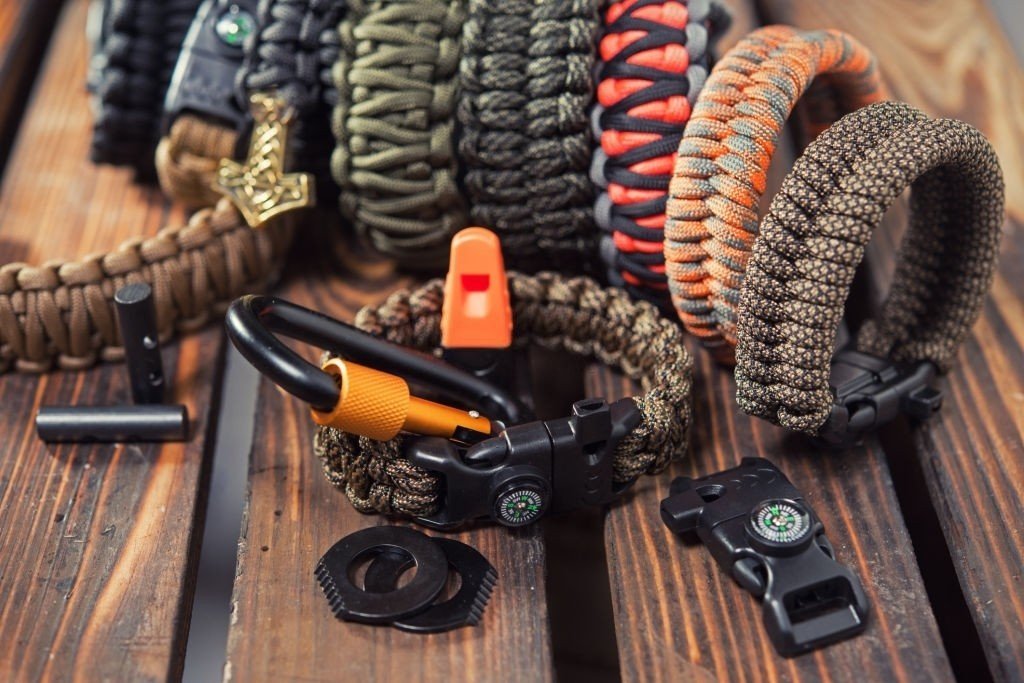The importance of paracords in one’s survival supplies cannot get overstated. Having a roll on hand, which one can tuck into their bug-out-bag, is enough. However, getting it on hand in the form of a bracelet, keychain, belt, or lanyard can even save a life.
With that, the question begs: What is Paracord?

So, What is Paracord?
A rope, by definition, is any long, thick cord formed by twisting or braiding strands of fibers together. Manufacturers can produce ropes from various materials, although hemp, sisal, and nylon are the most common.
The rope's structure and content would have a significant impact on its consistency and application. Compared to other rope forms, a paracord has two distinct characteristics that make it ideal for survival: it is made from nylon and employs a Kernmantle-style braid.
Nylon as a Material
Nylon is the only material that you can use to make genuine paracord. Nylon is both waterproof and mildew-resistant. It is elastic, but it has a little give to it, so it does not break. It also gives paracord its smooth feel, making it more comfortable to handle and preferable to other types.
Kernmantle-Style Braid
All ropes are produced by twisting or braiding fiber strands together. Braided cords are generally thicker and more resistant to abrasion. Moreover, you can braid a rope in a variety of ways. For one, Kernmantle is the braiding technique that separates what paracord is and what it is not.
Kernmantle ropes have a braided sheath around them and an interior core called the kern. The kern gives the rope its power, while the sheath protects it from abrasion. Despite its distinctiveness, paracord isn't the only kernmantle-style cord. Modern climbing rope, for example, is constructed in the kernmantle style.

Uses of Paracords
Genuine mil-spec paracord has seven inner strands, each of which comprises three inner strands — the "guts." That means that a bracelet with 10 feet of the cord can become 200 feet of strong cord when unwound. Paracords offer a wealth of uses across several aspects, including:
- Constructing shelters
- Constructing traps
- Nets and fishing lines
- Repairs to the sewing machine
- Pinning down tents
- Fastening gear to a backpack
- Knotting or weaving into sleeping bags, among others
What Makes Paracords Special?
Flexibility is the short and easy answer. Apart from the fact that paracord is three times stronger per mass on average, the main difference that sets a regular nylon cord apart from paracord is how easily it can be adjusted to suit various circumstances.
This multi-tiered design gives paracord its incredible strength, as the individual strands, which have two, but sometimes three, yarn strands each, can hold the cord together even if a few strands break apart due to nicking or friction.
However, even if it is "graded" at 550 pounds of resistance, a paracord is not a suitable substitute for a proper climbing rope. One must always note that its evaluation is based on a best-case scenario and environment.
When weight is kept constant, lateral tension is much less than when the weight gets dropped unexpectedly. If one uses a 550 paracord to carry something weighing 540 pounds and the line shakes, or the item falls, the paracord can break because there is extra weight due to the unaccounted-for motion.
You should always use the right cord for the proper application, and you should always use conservative numbers and figures.

Types of Paracords
As established, there are various types of paracords, which are classified primarily by the amount of weight they can carry.
Type I
The most popular form of paracord is Type I, available at most hardware stores for a reasonable price. Dummy cording and decorative purposes are popular uses for these cords. Furthermore, they can only hold 95 pounds, although Type Ia can hold up to 100 pounds, rendering them unsuitable for heavy-duty service.
Type II
Type II paracords are more difficult to find, but they can support up to 400 pounds of weight, while the IIa variant can only hold up to 225 pounds. Due to their rarity, experts generally suggest avoiding them in favor of Type III paracord.
Type III
Type III paracord is another common paracord found in almost any hardware store. They can support up to 550 pounds and are ideal for a range of survival and outdoor activities. This paracord is also very versatile, and you can use it for a variety of purposes.
Type IV
The most expensive form of paracord is Type IV, which can cost twice as much as Type III paracord. They can support up to 750 pounds of weight, making them the strongest paracord out there and the best option for those looking for a durable rope.
Conclusion
Quality and flexibility are the two core factors that distinguish what paracord is and what it is not. After answering the question “What is Paracord?” no one can deny the importance of having a paracord handy for any situation.
